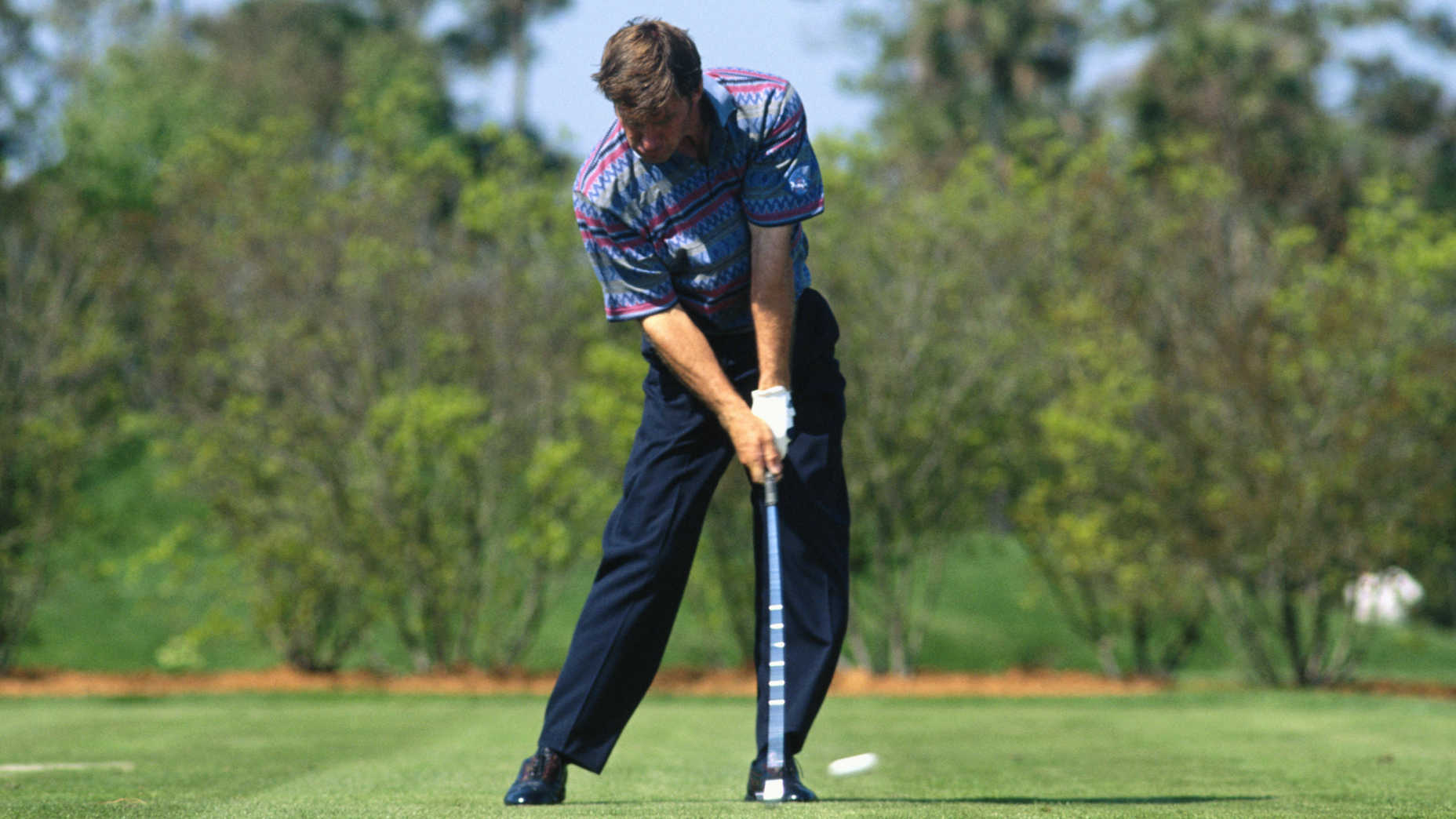There is nothing more important in golf than the moment you actually hit the golf ball. A good impact position is something every golfer should strive few, and in my opinion, efficiency is the key to finding that impact position for consistency and effortless power.
Last week I wrote about the setup, which can make finding a good impact position much easier. But while setting yourself into a good setup is important, impact is a dynamic movement. Here are a some easy-to-spot ways you can improve yours…
1. Reverse “K” body shape
The proceeding pictures illustrates Nick Faldo with an iron. Highlighted in green shows the lead side of the body has bumped forward from its original position and formed a straight line down the lead side. This has also created a “tuck” in the trailside.
2. Lead shoulder above trail
You will also note the lead shoulder is above the trail shoulder. This also is true with the hip line. The lead hip is above the trail hip, which matches the shoulder line. The trail leg and knee has moved inward creating a tuck look as well.
3. Tucked trail arm
A key feature at impact and through impact is a tucked bent trail arm. The trail arm is slightly below the lead arm and the trail wrist has angle to it. This forms a “pushing motion” through impact, a position to trap the ball through impact for a proper strike.
4. Push swing drill
A great drill to get the feeling for this impact position is to simply practice pushing into an impact bag. Set up to the bag in this desired impact position. Hold your body and swing the club back two feet and return the club into the impact bag. Then push the bag to get the feeling of your arms and body working through impact.
Once you get the feeling for this new impact position start hitting balls focusing on contact. Like learning any new movement, start slow and gradually add speed. First comes form, then contact, then direction, followed by repeatability and speed.
